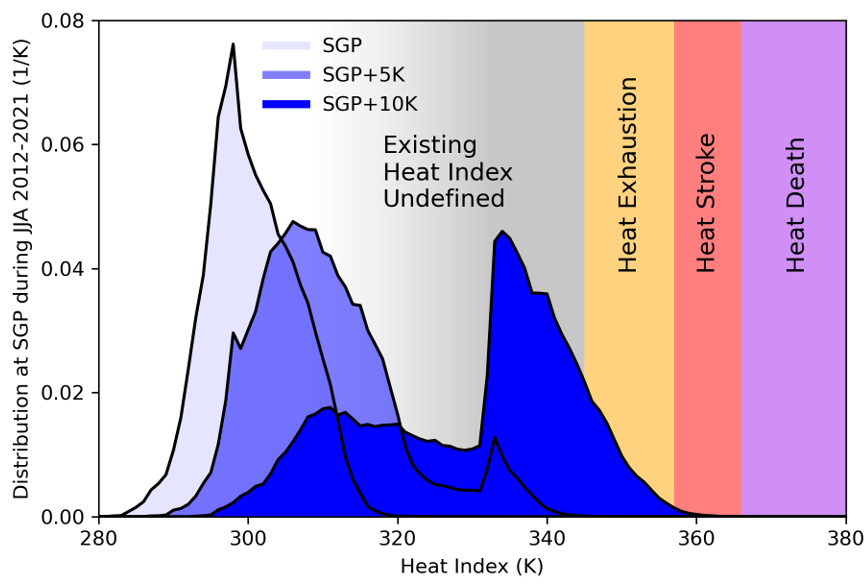Extending the heat index
Submitter
Romps, David — Lawrence Berkeley National Laboratory
Area of Research
Atmospheric Thermodynamics and Vertical Structures
Journal Reference
Lu Y and D Romps 2022. "Extending the Heat Index." Journal of Applied Meteorology and Climatology, 10.1175/JAMC-D-22-0021.1. ONLINE.
Science

Figure 1. (light blue) Distribution of the Heat Index at the ARM SGP site in the summertime, plus the same distributions after adding (blue) 5 K and (dark blue) 10 K. The grey region with gradient shows where the Heat Index was formerly undefined. (Image courtesy of David M. Romps)
The Heat Index, introduced in 1979, is undefined for temperature-humidity combinations arriving soon with global warming. We fix that.
The existing Heat Index is well-defined for most combinations of high temperature and humidity experienced on Earth in the preindustrial climate, but global warming is increasingly generating conditions for which the Heat Index is undefined. Therefore, an extension of the original Heat Index is needed. Here, we extend the Heat Index using the same physiological model as in the original work of Steadman to ensure backwards compatibility.
Impact
Following Steadman, each value of the Heat Index is mapped onto a measurable physiological variable, which can be useful for assessing the health impacts of various combinations of temperature and humidity, especially for outdoor workers.
Summary
The correspondence between the Heat Index and the physiological state allows us to assess future habitability under different warming scenarios. Even for a very fit individual (approaching the optimal human assumed in the thermoregulation model), the rate at which a human can expel heat is still constrained by physical laws that govern, for example, heat conduction and the evaporation of water. In a sufficiently hot and humid environment, the human body runs out of tricks for regulating its core temperature, leading to sickness or death.
Keep up with the Atmospheric Observer
Updates on ARM news, events, and opportunities delivered to your inbox
ARM User Profile
ARM welcomes users from all institutions and nations. A free ARM user account is needed to access ARM data.


















